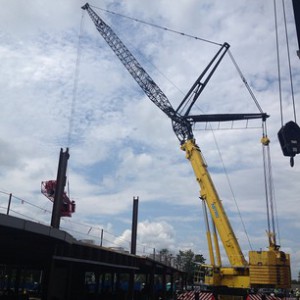 Modern skyscrapers exist thanks to cranes. How are construction cranes raised so they can assist in the assembly of a tall building? Good question.
Modern skyscrapers exist thanks to cranes. How are construction cranes raised so they can assist in the assembly of a tall building? Good question.
Have you ever assembled an artificial Christmas tree? When you do, you typically have a base, a pole, and several branches to put together to make the tree look right. You’ll start at the bottom and work your way up, adding branches from the bottom to the top until you get to the very top and put the star on. Assembling a Christmas tree is a bit like raising a crane.
There are two ways to raise a crane. Self-erecting cranes sit inside of buildings where they lift themselves up using jacks, floor by floor, rising with the building. The other way to raise a crane involves using a jack to surround the shaft of the crane, lifting a section or piece of the crane upward, bolting it together in sequence, and building it up piece-by-piece as if a vertical puzzle was being put together.
Most cranes start out with a base bolted to a concrete pad on the ground for steady support. These pads typically weigh 400,000 pounds! Eventually, the mast (aka the tower) is raised to give the crane its height, followed by the attached slewing unit (gear and motor) at the top so the unit can rotate. On one side at the top you’ll see the working arm (aka the jib) which carries the load, and on the other side are counterweights, motors and more.
In order to raise the tower crane, which is brought to the site by about a dozen tractor-trailer rigs, a mobile crane is utilized to assemble parts of the crane and then, essentially, the mobile crane is used to puts the pieces of the puzzle together “growing” the crane upward.
Crews may use a climbing frame to hang weights on the jib and bolt pieces into place.
Astro Crane of New England rents hydraulic cranes ranging from 6 to 600 tons; if you need one, call toll free at (978) 429-8666.

